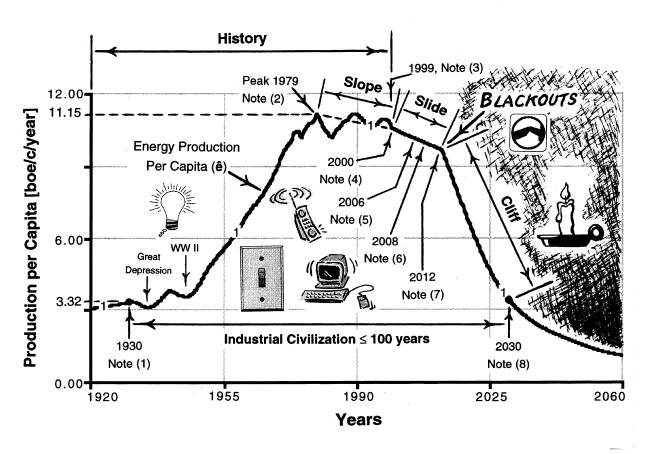Timothy Wilken
“The Chinese word for crisis is written by joining two ideograms together. When these ideograms, are presented separately they stand for two different ideas or concepts. The first ideogram stands for danger and the second ideogram stands for opportunity.”

DANGER—Danger of injury if we humans fail to understand. Danger of destruction if we humans act in ignorance.
OPPORTUNITY—Opportunity for growth if we humans understand. Opportunity for survival if we humans act in knowledge.
If we examine our crisis in terms of life, things will become more clear. Crisis is not unique to humankind. Crisis is the general condition of all life forms. It is the driving force of evolution. Risk and opportunity. Survival of the fittest. The life form that survives and evolves is the one that can grasp the opportunity and avoid the risk. This is the very process of life. It is the engine of evolution. Today’s crisis is simply our turn. We humans are at a point of major transformation. If we humans are to have a future, we must begin by facing the truth.
Truth # 1
We are running out of petroleum. The current electrical power crisis in California is just the tip of the iceberg. And its even worse that it appears, Richard C. Duncan, Ph.D. a Geological Scientist and Engineer explains our crisis in his Olduvai Theory:
“In 1989, I concluded that the life-expectancy of Industrial Civilization is horridly short. This hypothesis was defined in terms of a measurable index, world energy-use per person, and named the “transient-pulse theory of Industrial Civilization.” I sketched its maximum point at 1990, followed by a persistent decline. Ö By 1996, however, I had successfully tested the Olduvai theory against numerous sets of data. The following facts emerge.
- The broad sweep of human history can be divided into three phases.
- The first, or pre-industrial phase was a very long period of equilibrium when simple tools and weak machines limited economic growth.
- The second, or industrial phase was a very short period of non-equilibrium that ignited with explosive force when powerful new machines temporarily lifted all limits to growth.
- The third, or de-industrial phase lies immediately ahead during which time the industrial economies will decline toward a new period of equilibrium, limited by the exhaustion of nonrenewable resources and continuing deterioration of the natural environment.

“The life-expectancy of Industrial Civilization is less than one-hundred (100) years. Industrial Civilization doesn’t evolve. Rather, it rapidly consumes “the necessary physical prerequisites”for its own existence. It’s short-term, unsustainable. “This is a one shot affair there will be one chance, and one chance only.””
Updated 03/07/01: The Olduvai theory states that the life-expectancy of Industrial Civilization, defined in terms of world energy use per capita (e), is less than or equal to 100 years. HISTORY: We know that the peak of e occurred in 1979 and that e declined from 1979 to 1999 (the ‘slope’). FUTURE: The Olduvai theory predicts that e will decline even faster from 2000 to the so-named ‘cliff event’ (the ‘slide’). A previous study put the ‘cliff event’ in year 2012 (Duncan, 2001). However, it now appears that 2012 was TOO OPTIMISTIC. The following study indicates that the ‘cliff event’ will occur about 5 years earlier than 2012 due an epidemic of ‘rolling blackouts’ that have already begun in the US. This ‘electrical epidemic’ spreads nationwide, then worldwide, and by ca. 2007 most of the blackouts are permanent. The ‘modern way of life’ is history by ca. 2025. You can read Duncan’s earlier paper on the Olduvai Theory, and/or his most recent paper. I also recommend two papers by Jay Hanson, Energy Synopsis and A Means of Control . For those you like their Truth unvarnished, the whole story can be found at Jay Hanson’s excellent website.
If we humans are to solve our problems we must do so by facing the truth. If we are to have a future, it will be one where we are enormously more efficient. We must organize in ways that allow us to do more with less. This will require co-Operation, co-Laboration, and co-Action. With the danger of crisis always comes opportunity. How can deflect the danger and embrace the opportunity? Take a look at my paper Synergic Consumption.
PS: More information on the Energy Crisis Campbell’s address to Parliament: http://www.hubbertpeak.com/campbell/commons.htm Colin J. Campbell and Jean H. Laherr‘re in Scientific American, March 1998: http://www.dieoff.org/page140.htm This web site explains that the global oil fields are running empty, and the severe impacts expected: http://www.runningonempty.org/
“When Will The Joyride End?” Home Power Magazine: http://www.homepower.com/bonus.htm L.F. Ivanhoe, “Get Ready For Another Oil Shock”: http://www.dieoff.org/page90.htm Shirley Bryce, “Global Manipulators Move Beyond Petroleum”: http://www.newdawnmagazine.com/Articles/Beyond_Petroleum.html Convince sheet at: http://greatchange.org/convincesheet.html Murray Duffin, “The End Of Cheap Oil”: http://lists.wwpublish.com/pipermail/crashlist/2000-September/001099.html
